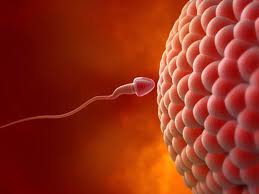 The absence of sperm in the ejaculate, a condition called azoospermia, can prevent a patient from fathering a child. For our patients in Houston, sperm extraction techniques, also known as sperm retrieval, can allow a patient that does not have sperm present in the ejaculate to father a child. If you are affected by azoospermia and wish to father a child, there is hope. Through sperm extraction and the utilization of IVF and ICSI, a patient with no sperm present in his ejaculate may be able to become the father of a healthy baby.
The absence of sperm in the ejaculate, a condition called azoospermia, can prevent a patient from fathering a child. For our patients in Houston, sperm extraction techniques, also known as sperm retrieval, can allow a patient that does not have sperm present in the ejaculate to father a child. If you are affected by azoospermia and wish to father a child, there is hope. Through sperm extraction and the utilization of IVF and ICSI, a patient with no sperm present in his ejaculate may be able to become the father of a healthy baby.
What Is Azoospermia?
Azoospermia is a condition in which there is an absence of sperm within a male’s ejaculate. Issues with sperm production or with the delivery of the sperm can result in azoospermia. While it is impossible for a Houston fertility center patient with azoospermia to father a child without first undergoing treatment, through sperm extraction techniques, many patients affected by azoospermia can and will go on to father a child.
Types of Azoospermia
There are two types of azoospermia: obstructive and non-obstructive. As its name suggests, obstructive azoospermia is caused by an obstruction or blockage within the vas deferens, the ejaculatory duct, or the epididymis. Non-obstructive azoospermia can result from testicular failure, a hormonal imbalance, varicoceles, or genetic causes.
Treatments for Azoospermia
Sperm extraction techniques may be used to help men affected by azoospermia father a child. Two of the most common and successful sperm extraction techniques performed today are microsurgical epididymal sperm aspiration (MESA) and testicular sperm extraction (TESE). The unique needs, goals, and cause of a patient’s azoospermia will determine which technique will be used during his sperm extraction procedure.
MESA
Microsurgical epididymal sperm aspiration (MESA) is recommended to patients affected by obstructive azoospermia. During the MESA procedure, the organ located above the testicle where the sperm are stored (the epididymis) is isolated through a half-inch incision in the scrotal skin. Houston male infertility specialist Larry Lipshultz then uses an operating microscope to locate and examine an epididymis tubule to see whether it contains sperm. The epididymis tubule is opened, and the fluid is collected. Once it has been collected, the fluid is examined to confirm the presence of sperm and to determine the quality of the sperm. If sperm are found within the sample, all of the fluid is then removed from the epididymal tubule. If the sample shows dead sperm or if there are not sperm present, another area of the epididymis is sampled until there is a sufficient amount of sperm collected.
TESE
Men affected by non-obstructive azoospermia may benefit most from the testicular sperm extraction (TESE) technique. During the procedure, a small piece of testicular tissue is removed through a half-inch incision. Once removed, the testicular tissue is examined for sperm. The sperm are then removed from the seminiferous tubules and extracted from the surrounding testicular tissue.
Learn More about Sperm Extraction
If you are affected by azoospermia, there is hope. Through sperm extraction techniques, many men are able to father a child. To learn more about sperm extraction techniques, or to schedule a personal, confidential consultation, please contact Houston male infertility specialist Larry Lipshultz today.